The Art of the Beat Down
How cultural curator Adam Abdalla is bringing the world of indie wrestling out of the ring and into the gallery space.
Hey all,
We’re in that strange season between winter and proper spring when everything feels a bit unpredictable. Will it be 70 degrees and sunny? Maybe 30 and raining? Will we have a complete economic meltdown? Who can know! But outside my Brooklyn window, the cherry blossoms are in bloom, the air smells like fresh Polish bread from Syrena Bakery, and someone is shouting something at maybe a neighbor, maybe no one at all. Life, in its strange way, is moving forward. But while I’m inside recovering from various aches and pains (long story), I am endlessly thankful for everyone who went out yesterday and made their voices heard. If you found a way to bring some joy back into your world this weekend, I hope you’ll drop a note in the comments.
On Thursday, I stopped by the New York Antiquarian Book Fair at the cavernous Park Avenue Armory (which is open for a few more hours!) to see everything from 15th-century illuminated manuscripts to 80s punk zines to the world’s smallest French/English dictionary. If you haven’t checked it out yet, go now.
As promised, I’m going to start regularly publishing (for real this time). Is there something you want to see more of? Less of? Think you’re working on the coolest thing ever? Drop me a line at slowghost@substack.com.
~Laura
Slow Ghost logo: Tyler Lafreniere. Image: Mariana Bersten for Orange Crush.
Read:
About the golden age of Japanese pencils.
A day in the life of America’s most hated car.
Whether you qualify for dual citizenship.
An abridged history of Hi Octane, Sofia Coppola’s short-lived TV show.
Neko Case on how language shapes us.
Check out:
The visionary design work of Iris van Herpen with Sculpting the Senses at ArtScience Museum, then stalk this incredible “future orchid-avatar” dress she made for Bjork.
It’s time to get niche and analog: Williamsburg is getting a video store and John Wilson is opening a theater.
Get your free, live Swedish music while it’s hot (ice cold).
Muse to Kenneth Anger, wife of pioneering rocket scientist Jack Parsons, frenemy to Anais Nin — the endlessly fascinating poet, occultist, and surrealist artist Marjorie Cameron (1922-1995) gets a solo exhibition at Nicole Klagsbrun in NYC.
Travel:
Armchair meandering to the Coast of Amalfi to stay at this repurposed cliff-side monastery.
And while I’m mentally in Italy, stopping by the Wes Anderson-coded Grand Hotel Bristol.
Ready to freedive in Dahab.
And of course, Alan Cumming’s “travel guide” is perfect, just like him.
From Body Slams to Brush Strokes
With publications like Visitors and Orange Crush, Adam Abdalla is showcasing the craft behind the knockdown.
Nathan Boone for Orange Crush.
Adam Abdalla is the President and Founder of PR powerhouse Cultural Counsel, which counts A24, Creative Time, and the Morgan Library as clients. Abdalla is also the co-founder of in-house platform the Affidavit, which has published the works and essays of writers like Kate Zambreno, Chris Kraus, Hanif Abdurraqib, and Natasha Stagg (among others).
A lifelong indie wrestling fan, Abdalla is also the creator of Orange Crush: The Journal of Art and Wrestling, a stunning print publication dedicated to life in the ring. In 2023, he and photographer Nick Karp captured some of the passionate gladiators driving this scene in VISITORS, a limited-edition hardcover book, along with an exhibition of photographs at NADA East Broadway. Adam chats with Slow Ghost about his love for the sport and the unsurprising overlap between death match fighting and the art world.
Slow Ghost: Without being too pretentious about it, you’ve worked with some of the world’s top artists and cultural spaces. You could focus on almost any topic with your print publications and exhibitions. Why wrestling?
Arrested development. I’ve liked it since I was four years old, and it’s always been a subculture I’ve been a part of. I started going to indie shows on my own probably when I was twelve. I had gotten to a point in my career where I had my own business, and, wanting to contribute to the community in an additive way, I started throwing cash to a couple of indie shows here and there. This was mostly for canvas sponsorships and things like that. The shows are very DIY, and most people are in it for the love of it.
Image courtesy of Orange Crush.
A true passion project.
Then I started thinking about the cross-section between what I do in my everyday life, which is work with contemporary artists, arts institutions, and entertainment companies, and how it intersects with wrestling at a deeper level. Because, at its core, wrestling is a business built on the foundation of people who live outside the box and are hyper-interested in a very niche, weird thing. However, a lot of them are also creatives – painters, musicians, and performance artists.
On the other hand, as I started researching, I began to discover the wealth of information and creativity behind it. I was aware of it prior because of my two interests. Still, just getting it on paper, all the really interesting cross-sections between the contemporary art space and the professional wrestling space, began to open my eyes. I realized, “This could be a cool publication or annual journal.”
Raymond Pettibon in Orange Crush.
The magazine is really something special, and there were so many influential artists that stepped in to take part.
We were able to interview people like Raymond Pettibon, who grew up as a wrestling fan, going to the Olympic Auditorium in Los Angeles, and Mike Watt from The Minutemen. I interviewed both of them. We've done work with Shaun Leonardo, who had an entire performance practice where he trained to be a Luchador and then actually went and wrestled down in Mexico. It was a long-term photo and performance project that was just reprised at the Queens Museum.
There was also a book that inspired me to do the magazine called Exquisite Mayhem, which my colleague Ed Winstead bought for me as a gift many years ago. Cameron Jamie and Mike Kelley edited it. It was the archive of a photographer, Theo Ehret, who did kink apartment wrestling photography and sports journalism photos of major matches at the Olympic Auditorium. Jamie and Kelley put together this amazing hardcover book with essays and interviews that went between the two worlds. It was interesting because Mike Kelley, from an artistic point of view, has always been an inspiration. I actually worked on some of his final shows, as well as the mobile homestead in Detroit. Cameron and I have also become friendly; he went on to make a video about backyard wrestling that was shown in museums and galleries. In the first issue of Orange Crush, we took a retrospective look at that video and commissioned a few essays about it.
As for the magazine, many photographers and artists within the subculture just do it for the love of it. This world never really had a platform to show on before, and nobody asked for or did it. There was no way to get paid. So, it’s been an interesting, eye-opening project. I found it was enough material to do three annual issues.
Nick Karp for Orange Crush.
And it seems like so much more.
From 2020 to 2022, I began thinking more intently about doing single-artist projects. Nick Karp, a photographer I had collaborated with on many stories in Orange Crush, and I also did a zine during Covid called Death In Covid, where he went to death match wrestling shows around the country, pre-vaccine and pro-regulation in a lot of places. It showed this phenomenon that had started happening in live wrestling, which is that it had moved outdoors.
That’s so interesting.
Then we worked together on the hardcover book Visitors, where we essentially documented the journey of twenty American and Mexican wrestlers traveling to Japan for the first time to wrestle in death matches at Korakuen Hall, one of the most prestigious venues in the world of wrestling. Every promotion in Japan runs there, and every foreign wrestler aspires to wrestle there.
Visitors was a follow-along documentary book. At the same time as the book was launched, we also created an exhibition in multiple cities. I did a photography show at NADA Space in New York. We also had a happening at the Printed Matter Book Fair where we did a No Ring match in the middle of the street in Chelsea. One of the wrestlers climbed up a flagpole and bent it in half on a historic building. But I won't say who, and I won't say where.
Nick Karp for Visitors.
We won’t tell.
Luckily, we didn't get in trouble. And then we had a three-venue exhibition of large-scale photography, one at the East Broadway space in New York. Then we took it to the Tournament of Survival in Atlantic City at the Showboat, the country’s most prestigious death match wrestling tournament. We staged it in the negative space there, and it looked great because it’s a vast expo. Then, I went to Tokyo and curated a new version of the show with my friend Stewart Monroe at the Trunk Hotel in Tokyo, which was timed to that promotion’s return to Japan. That was the last book project I worked on, and since then, it has evolved into a curatorial practice.
Courtesy of Lee Moriarty.
What an interesting project coming out of an already fascinating subculture. I feel like the average Artforum reader has no idea.
In one of the earlier issues of Orange Crush, we featured a wrestler named Lee Moriarty, who is also a very talented graphic designer. He hit me up and said, “Yo, I want to start dipping my toe in the art world. What should I do if I want to start painting and if I want to show in a gallery?” I was like: first, you should paint on canvas because that’s the only way we can tell it will be saleable at scale. And he did it, and they were way better than I ever would’ve anticipated. We applied for a booth at NADA Miami 2024 with eight paintings and sold out the booth, including one to a local institution. Now, he’s going to have a solo show with Night Gallery in Los Angeles in September.
Mio Okazaki for Orange crush.
Incredible.
That curatorial practice continued as I applied to Nada New York with a female wrestler named Thekla, who performs in Stardom, the biggest Joshi promotion in the world. Joshi means “woman” in Japanese, but it’s shorthand for women’s Japanese wrestling. She does these wild figurative paintings – they're abstracted and biologically deconstructed, portraits of female bodybuilders and things like that. So, we will have a solo booth at NADA New York at the Starrett-Lehigh Building in May. The idea is to have a live wrestling and punk show coinciding with that presentation. Not everybody knows this, but I also own a wrestling promotion: Jersey Championship Wrestling.
Thekla Kaischauri for Orange Crush.
You what?
Yes. The feeder sister promotion to GCW is a larger outlaw promotion, which means an IMA-licensed wrestling promoter in New York state with the Athletic Commission. For some reason, they treated it as if it was real and not a performance. But that’s everything I have going on and everything I’ve done that I can think of.
That is a lot. You’re running an entire business, which also has its own business(es) and press while doing this on the side. Does all of this work together, or do you have to be really judicial with your time?
I’m judicial with my time. I try not to overcommit. At the beginning of the year, I map what projects I want to do, and then I try to stick to them. I try not to take on too much. Things snowball. I get pitched a lot of crazy ideas by a lot of wrestlers and artists. But I think, ultimately, my skill set professionally is to be able to project manage at a high level – 50, 60 things at a time – and it’s not that hard if it’s a different way of promoting. This is also a different audience. It’s very niche. I love it, too. No one is getting rich in indie wrestling. It’s more of a creative outlet for me to shine a light on some of these talents and performers who may otherwise not have exposure to those audiences. And so far, the reaction's been pretty good.
Is there something you would love to do, or put out into the universe, that would need help or funding? What would your dream project be?
There are a few things that I’d like to do. It would be cool for the major corporations that own WWE and EW to set up an industry-wide emergency fund for wrestlers. They’re often uninsured. They’re all independent contractors, whether employees of these major corporations or not. On paper, they’re all 1099s. I had a lot of experience in this field. I was the co-founder of Artist Relief in 2020, which was the nation’s largest direct-to-artist COVID-19 relief program. I think a 501C setup should have some funds for when wrestlers get hurt.
Ryan Loco for Orange Crush.
Like a wrestlers union?
Well, no, that’s for them to figure out. But I’m talking about the kind of emergency fund we have for when things go wrong, like with the recent California fires. For artists specifically, I think the industry should take better care of its own. But it’s complicated because the people who have to contribute the most are the ones who essentially control the strings and the different labor connectivity issues in the industry.
But I’d love to see a physical Hall of Fame of Wrestling. I also own the Indie Wrestling Hall of Fame trademark, launched in 2022 with my partner, Brett Lauderdale. We just added the Amazing Red, a famous wrestler from Queens.
So, we're working toward building a stacked lineup.
Learn more about Adam’s work at:
Orange Crush
Visitors
Cultural Counsel
Slow Ghost is a newsletter covering the next wave in culture, brought to you by writer and editor Laura Feinstein. It’s free, but you can support us by sharing and subscribing!



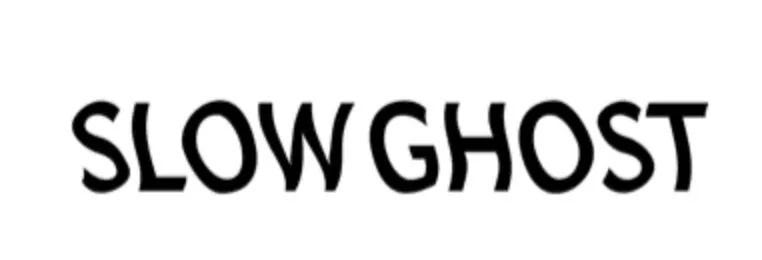



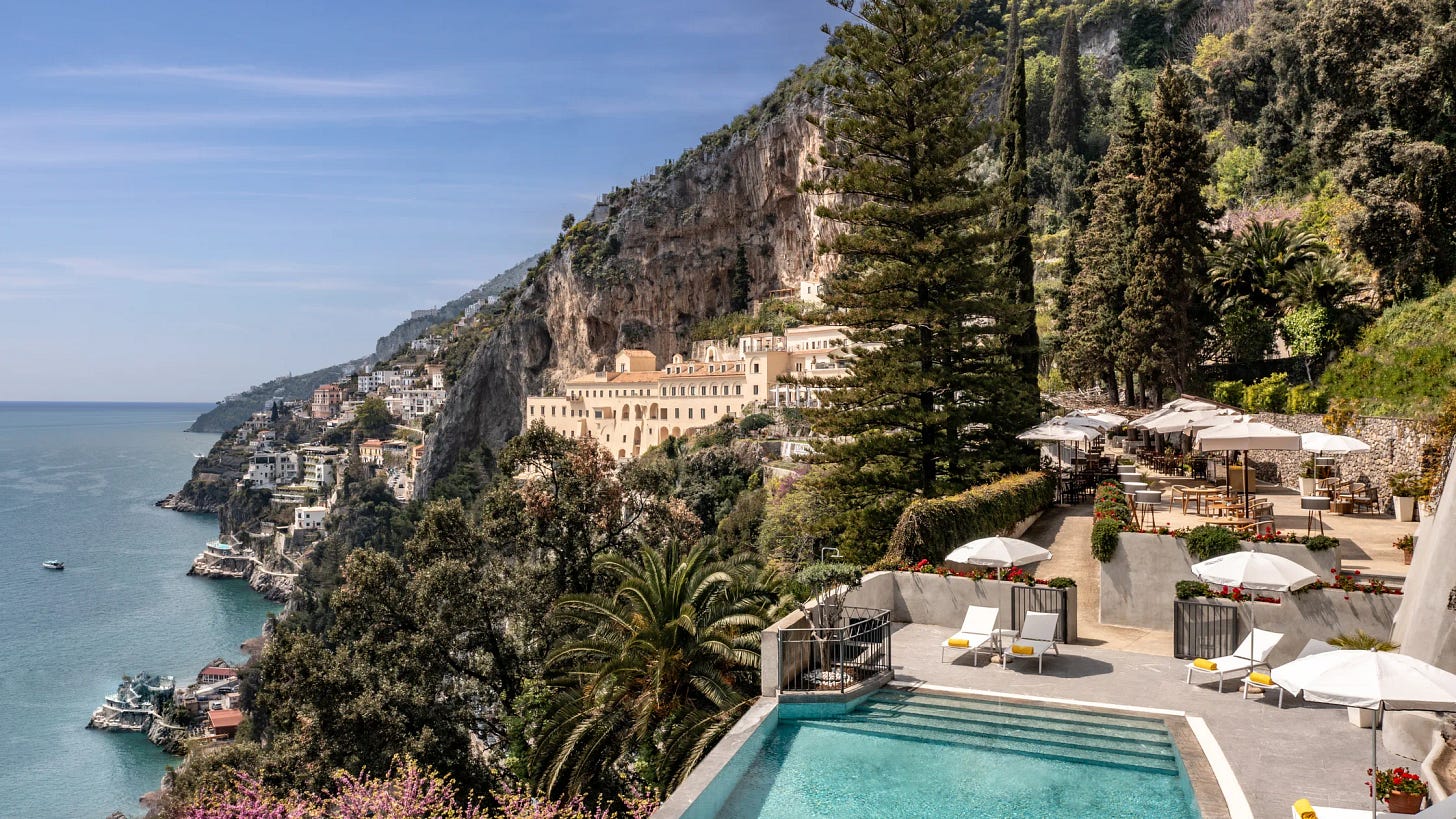
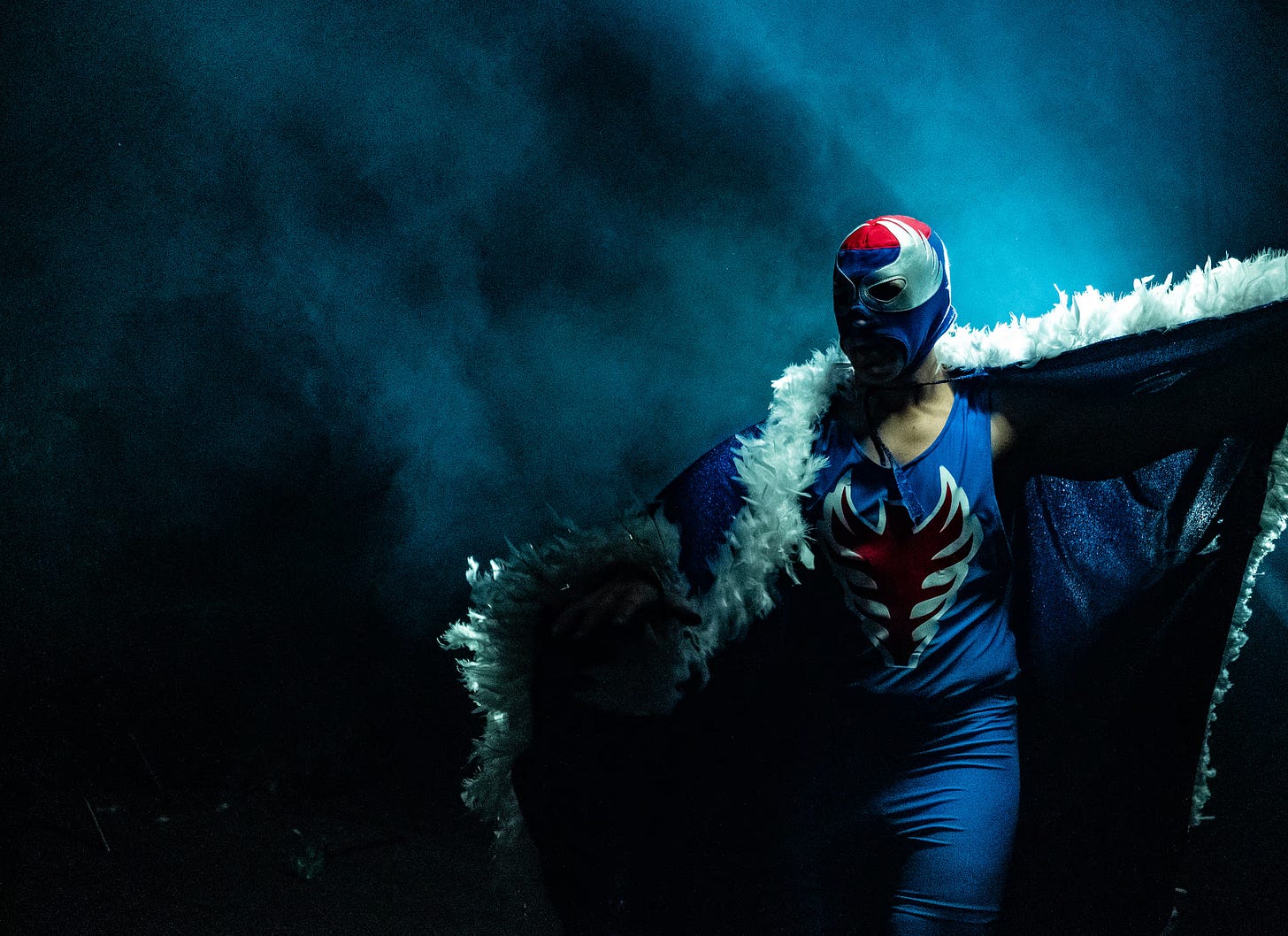
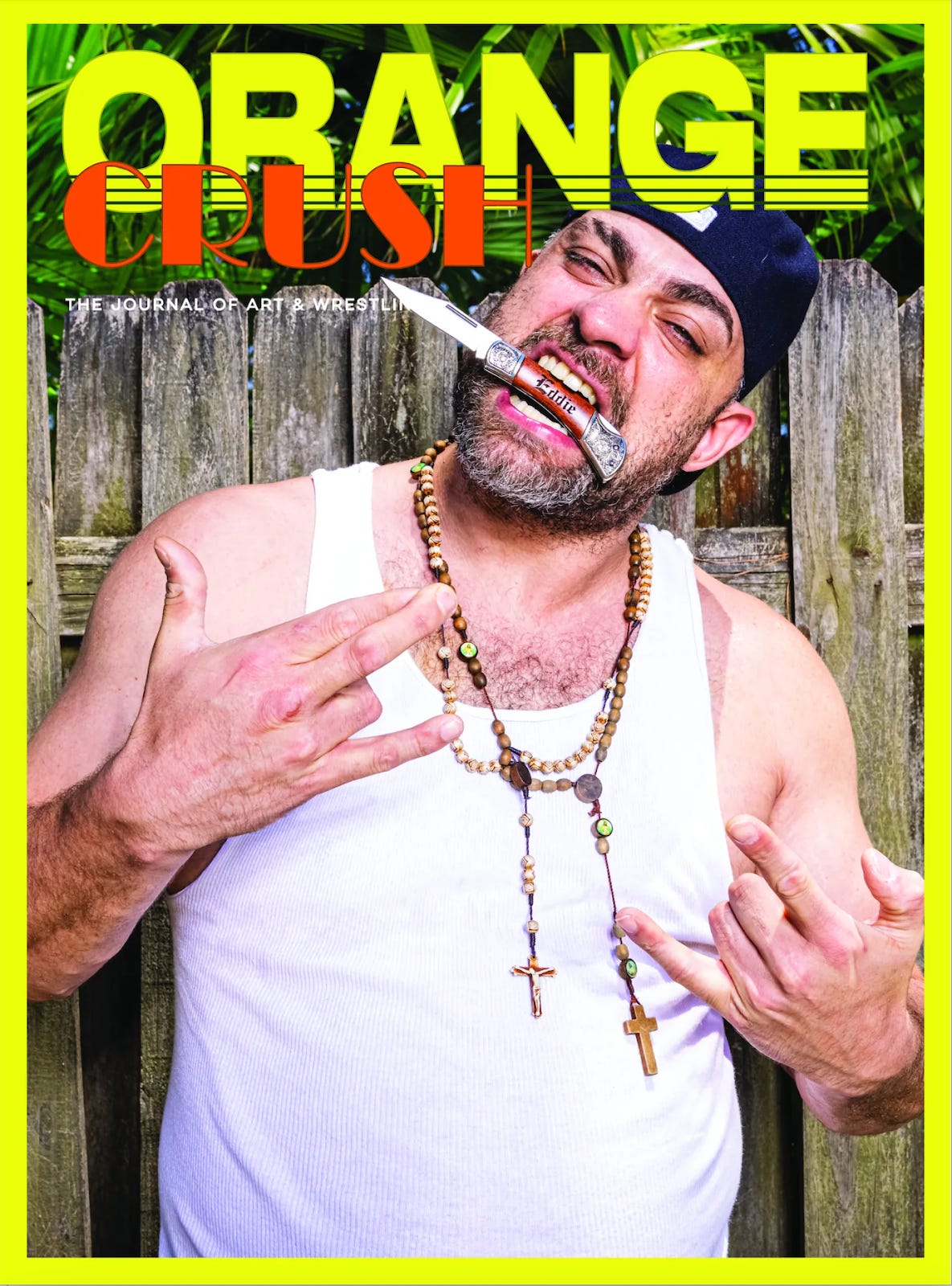
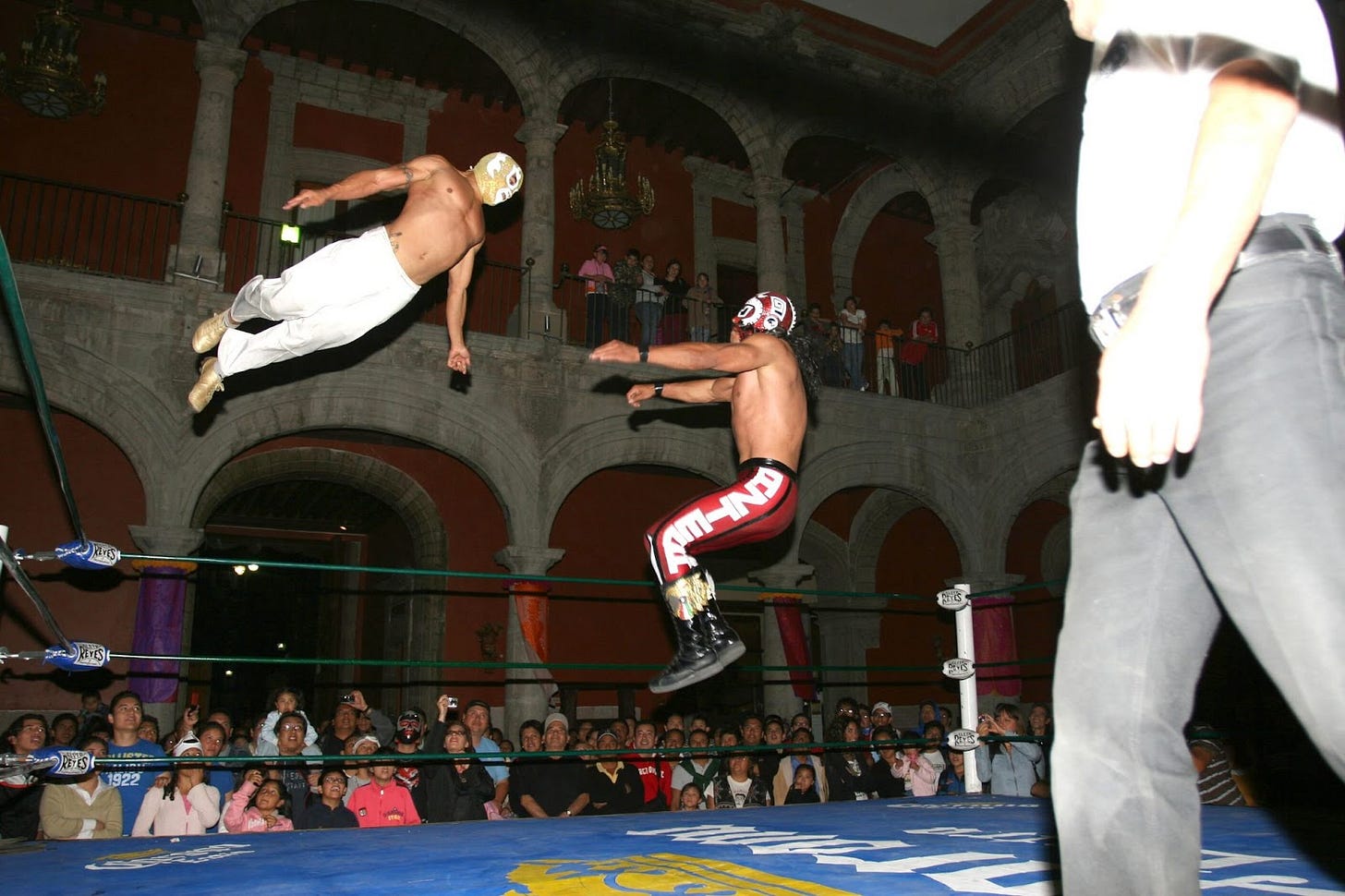




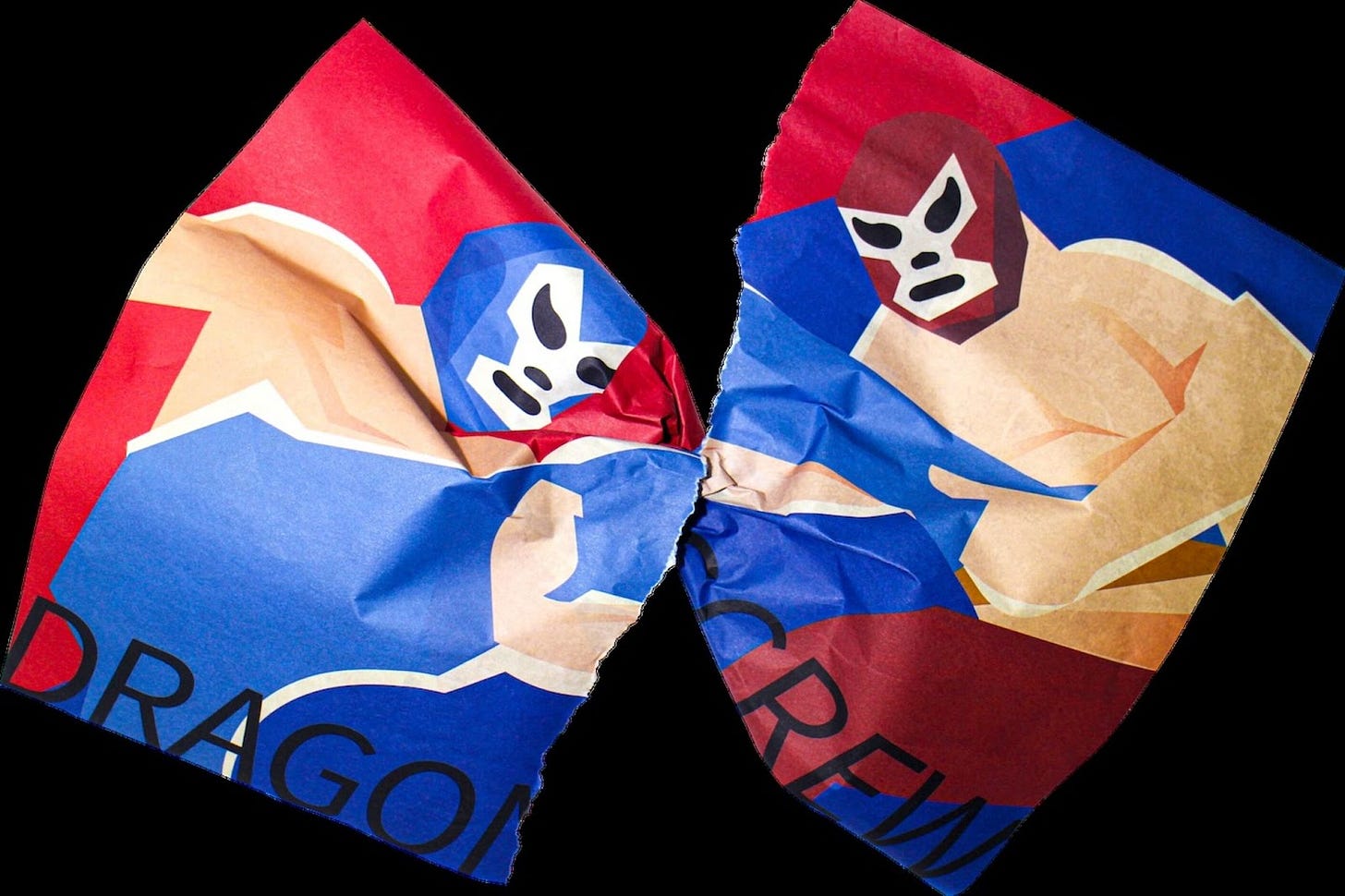


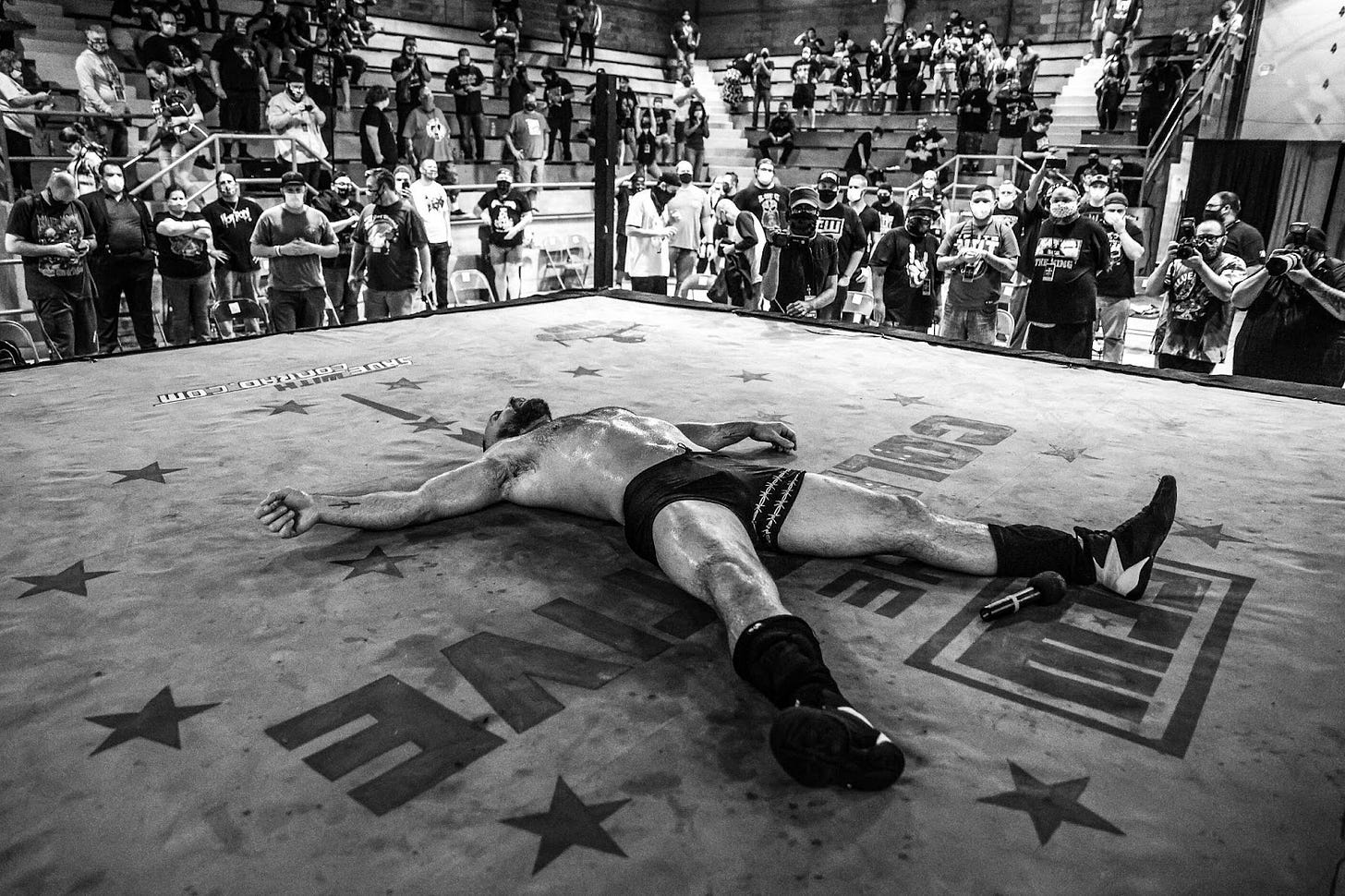

This is magnificent! I’m reminded of a collaborator from my Soft Skull days, Michael Muhammad Knight, who performed indie wrestling as something combining a spiritual practice, performance art, and cultural revolt. An amazing person—but it seems indie wrestling attracts amazing people.